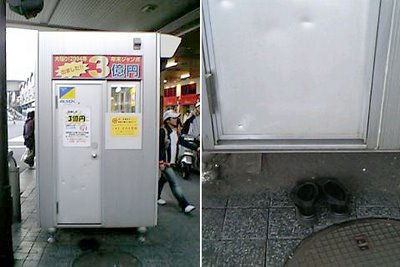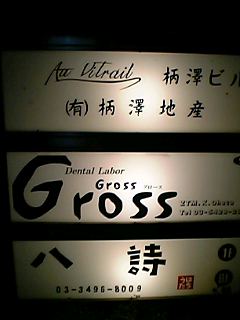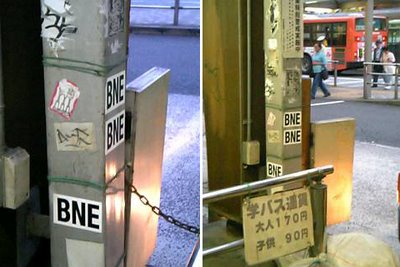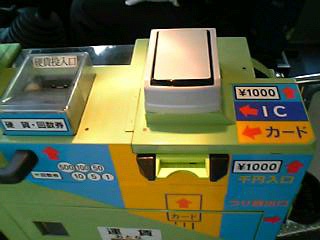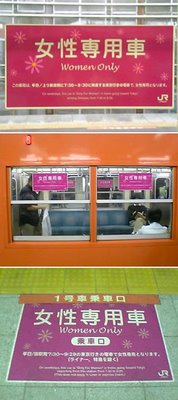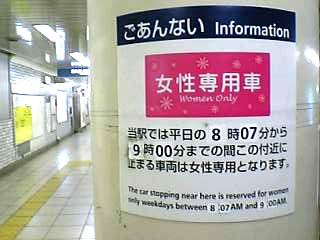
It may be milder and underwhelming compared to the American counterpart, but the anticipation for the first iPhone sale in Tokyo is enough to get Apple enthusiasts to start lining up for one when it becomes available tomorrow, July 11. Pictured above is the first of the line at the Omotesando-dori Softbank, and the guy proudly announced his number-one-ness on a nearby board. Hiroyuki Sano, the first guy in queue and who came from Nagoya, had been camping there since Monday night (and it is now Thursday night).
At the eve of this launching, the line stretches only half a block, but Omotesando-dori, known as the "Champs Elysees of Tokyo" has a wide sidewalk, providing these people with ample amount of space. And Japan being Japan, it seems that perhaps Softbank had provided security by posting officers every few feet. Luckily for them, the weather tonight was excellent for a Tokyo summer: breezy with hardly any hint of humidity; best of all, it was not raining. Two different groups of TV crews were seen interviewing some people in the queue.
I did wonder how popular iPhone will be in Japan as this country (along with Korea) is way far ahead of everybody else in terms of phones with great features and usability, although none of them matches Apple's sleek design and level of status symbol.








